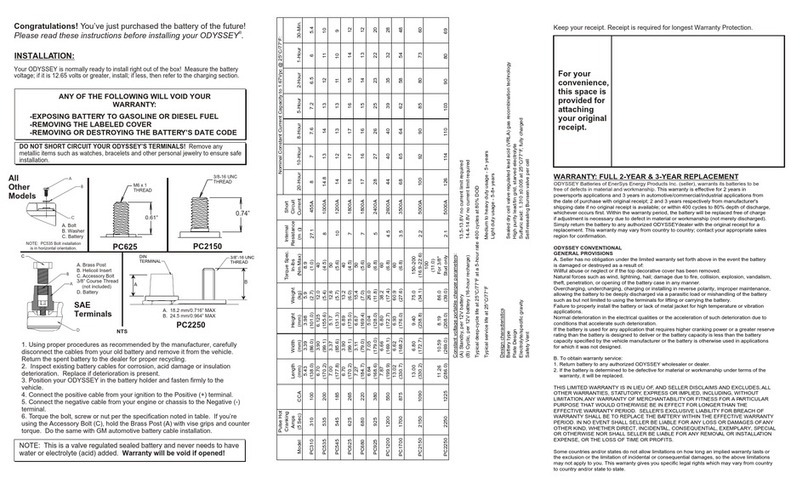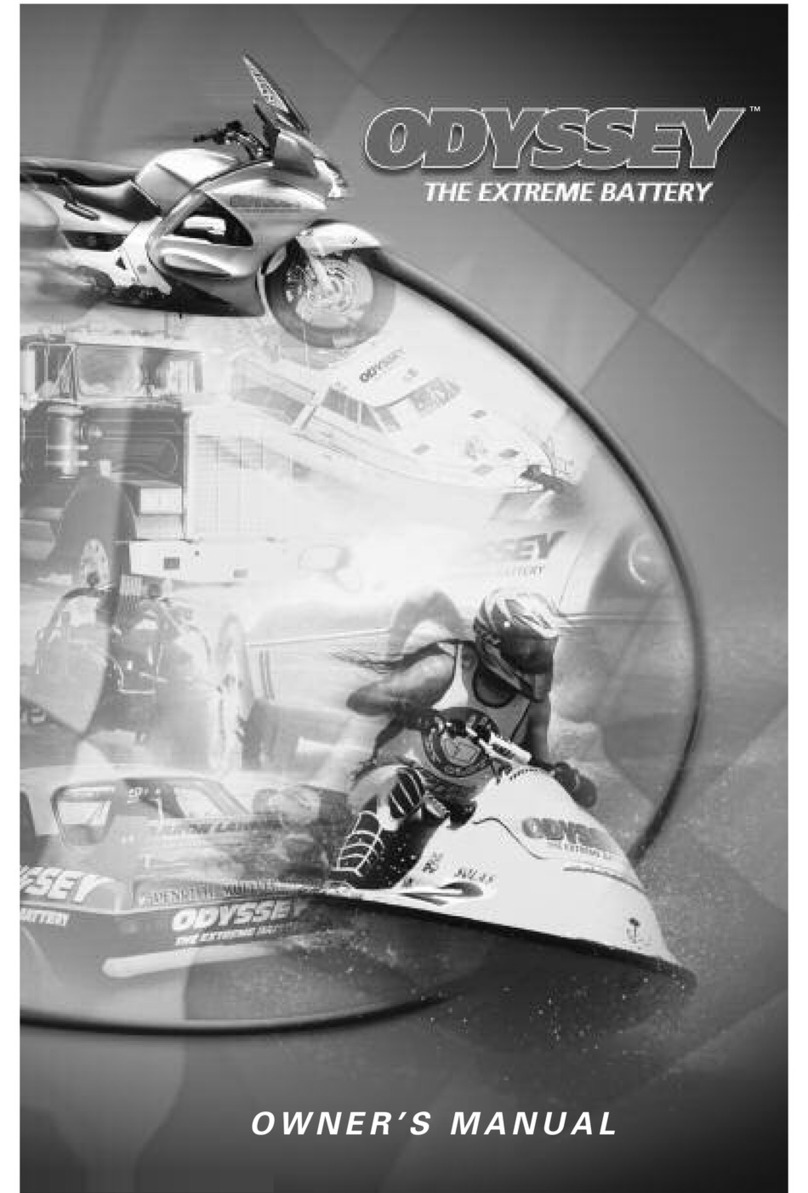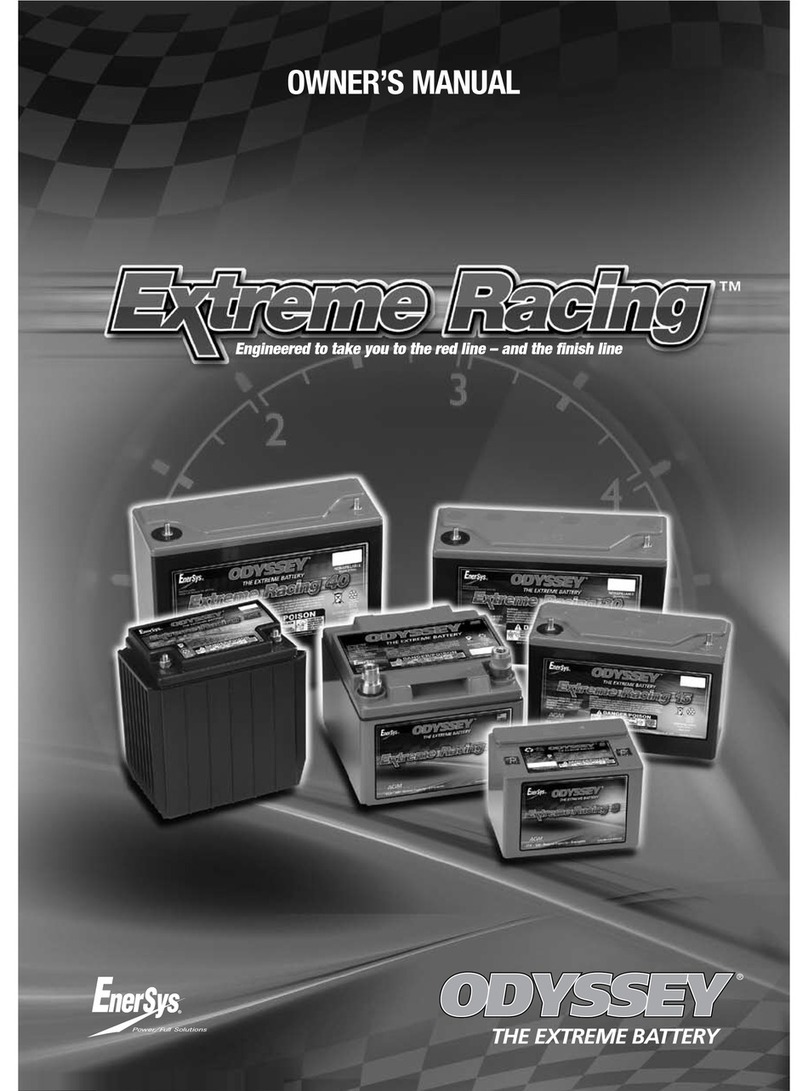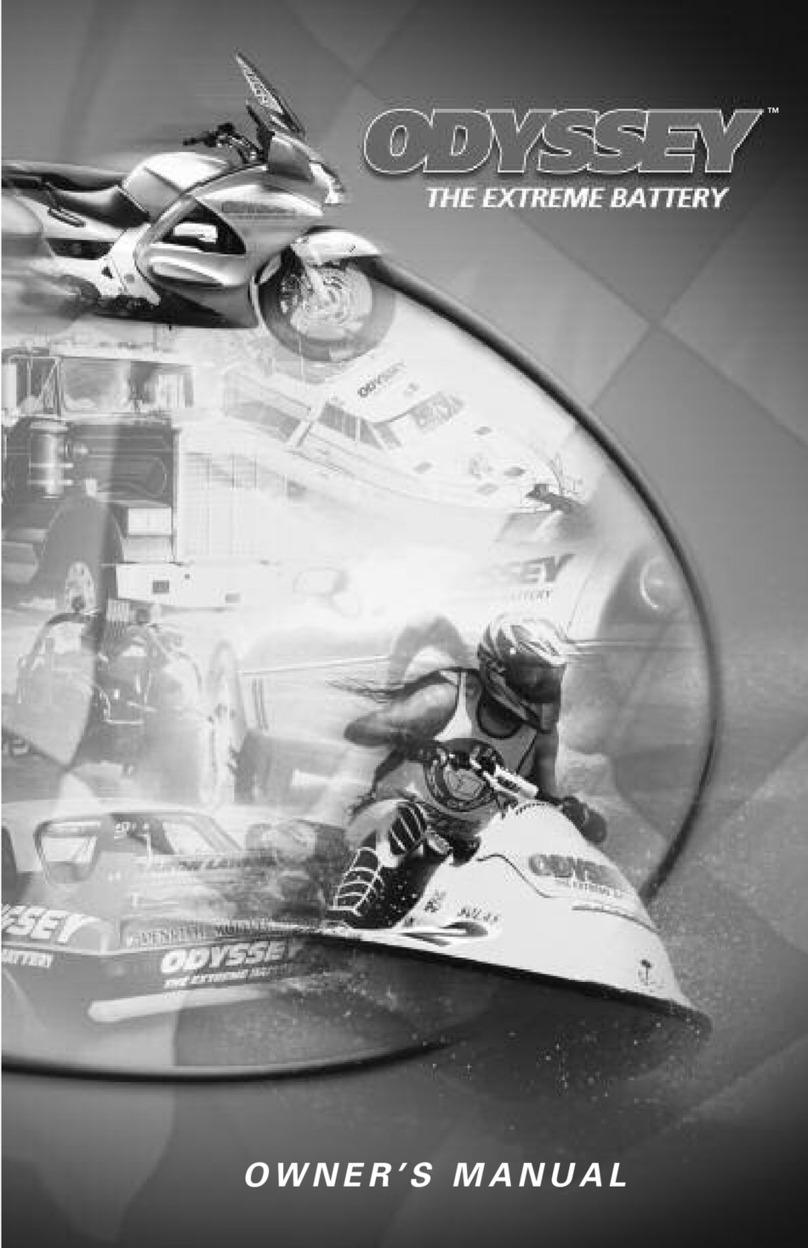
3
AMER-EN-IOM-ODY-0523
www.odysseybattery.com
I. INTRODUCTION
ODYSSEY®batteries are manufactured by EnerSys®using its unique Absorbed Glass Mat (AGM) Thin
Plate Pure Lead (TPPL) technology to deliver twice the power and three times the life of conventional
AGM batteries.
Bringing together the technologies incorporated into ODYSSEY batteries and NorthStar batteries has
integrated years of intelligence, research and development, resulting in the creation of the next
generation of AGM - TPPL batteries. AGM2is a unique design of Valve Regulated Lead Acid (VRLA)
batteries that combines three major technical advancements in one battery: super high-grade
materials + refined chemical formula + TPPL technology. This sets AGM2batteries apart in terms of
power, fast-charge acceptance, shelf life, durability and most of all exceptional value for your
investment.
Throughout their design cycle life, AGM2batteries can provide engine cranking pulses of up to 2700
amps for five seconds at 77°F (25°C), while delivering over 400 charge/discharge cycles to 80% Depth
of Discharge (DOD). This challenges all typical starting batteries, which are only designed for high cur-
rent for short durations, to perform poorly when deeply discharged repeatedly.
Likewise, a typical deep cycle battery, which is designed to provide relatively low current for a long
duration of time, cannot provide the high current bursts that are needed for starting applications.
AGM2technology allows one battery to provide both excellent cycling life and high-power capability
for many applications. AGM2batteries excel in both starting and deep cycling without compromising
lifespan or performance, making them an excellent choice for a wide range of applications such as
heavy-duty trucks, recreational vehicles, marine, emergency power and much more.
II. WHY USE ODYSSEY®AGM2BATTERIES?
• Longservicelife–designlifeof8-12yearsinfloatapplicationsand3-10yearsinnon-float
applications at 77°F (25°C).
• Fastcharging–extremelylowinternalresistanceallowshigh-currentcharging,whichreduces
charge time.
• Excellentcyclelife–provideupto900cycleswhendischarged50%.
• Lowtemperatureperformance–evenatsub-zerotemperaturesdownto-40°F(-40°C),battery
performance allows for quick engine starts or deep discharges.
• Longshelflife–canbestoredforuptotwoyearsat77°F(25°C)andlongeratlowertemperatures.
• Deepdischargerecovery–itispossibletorecoveradeeplydischargedAGM2battery. There is
more information on that process later in this manual. However, overall battery life will be affected.
• Virtuallymaintenance-free–noneedtoaddwatertobatteries.
• Superiorvibrationresistance–highcompressiondesignandhigh-strengthplasticconstruction
give these batteries extreme shock and vibration resistance.
• Mountingflexibility–canbemountedinanypositionexceptinverted/upsidedownintypical
starting applications.
• Easyshipping–approvedforshipmentasnon-hazardouscargobytheU.S.Departmentof
Transportation.
• ThemanagementsystemsgoverningthemanufactureofthisproductareIATF16949,ISO9001
andISO14001certified.




































